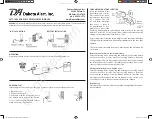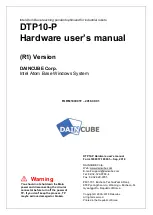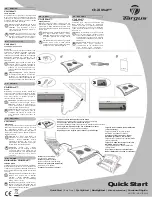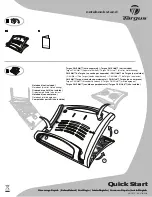
4
Avoid placing the battery in a hot place or in front of a window
(no direct sunlight). Battery racks are recommended for proper
installation.
The positive terminal is identified by a “+” symbol on each
monobloc/cell. Install the batteries in accordance with the
instructions and/or layout drawing, taking care to ensure
correct terminal location and polarity.
Check that all contact surfaces are clean. Tighten terminal
fasteners, taking care to use the correct torque loading. The
fastener torque value is indicated on the product label. Fit the
covers supplied for protection against short circuit.
Follow the polarity to avoid short circuiting of monoblocs/cells.
A loose connector can cause erratic battery performance and
possible damage to the battery and/or personal injury.
4.10 Commissioning Charge
The initial charge is extremely important as it will condition the
battery service life. So, the battery must be fully recharged to
ensure that it is in an optimum state of charge.
Case 1:
Using a constant voltage charger. Cells here will need
to be recharged at a constant voltage of between 2.35 and
2.40 Vpc (maximum) at 25°C for a minimum of 24 hours with a
current limited to 0.01
C10
Amps. Temperature compensation for
charge voltage should be applied at the rates shown below:
Temperature
(ºC / ºF)
Charge Voltage
(Vpc)
+10 / +50
2.44
+20 / +68
2.40
+25 / +77
2.38
+30 / +96
2.36
+40 / +104
2.32
Case 2:
With no external source available for recharging.
Connect the battery to the solar panel regulator and leave at
rest for 1 to 2 weeks. For this charge, set the regulator to the
values outlined in the charging section..
4.11 End-of-charge reading
The table hereafter gives an indication of the state of charge of
blocs and cells from a reading of open circuit voltage.
State of Charge (%)
Voltage
(Vpc)
100
2.17
90
2.15
80
2.12
70
2.10
5. Cyclic Operation
5.1 Cyclic Performance
The graph below shows cycling capability of PowerSafe SBS
XC products:
Figure 2
5.2 Discharging
Do not over-discharge the battery. This can be avoided by
including a Low Voltage Disconnect (LVD) switch in the circuit
or by disconnecting the battery from the load when the end
discharge voltage is reached. As a rule, installations will be
equipped with a regulator whose voltage threshold values will
protect against deep discharge:
Discharge Time
(Hours)
10
120
240
Low Voltage
Alarm
1.96Vpc
1.96Vpc
1.99Vpc
Disconnect
Voltage (LVD)
1.93Vpc
1.93Vpc
1.96Vpc
5.3 Charging
The high charge acceptance of the TPPL technology used in
PowerSafe
®
SBS
®
XC is suited for applications which require
a fast time to repeat duty. In such applications the voltage
regulator should be set at 2.35Vpc to 2.40Vpc at 25°C.
Once fully charged the voltage can revert to float voltage with
temperature compensation as required. There are a number
of methods that can be utilised to control the recharge and
determine, when using fast charge, that full state of charge is
obtained such as Current Absorption and Ah Counting.
Based on current absorption, the recharge can be stopped
when current being absorbed by the battery reaches
0.01
C10
Amps. At this point a timer can be set/activated to
deliver an additional 1 hour of charge.
Typical Number of Cycles as a Function of Depth of Discharge
in Unreliable Grid Applications
Depth of Discharge (%)
Number of Cycles
10000
9000
8000
7000
6000
5000
4000
3000
2000
1000
0
10 20 30 40 50 60 70
























